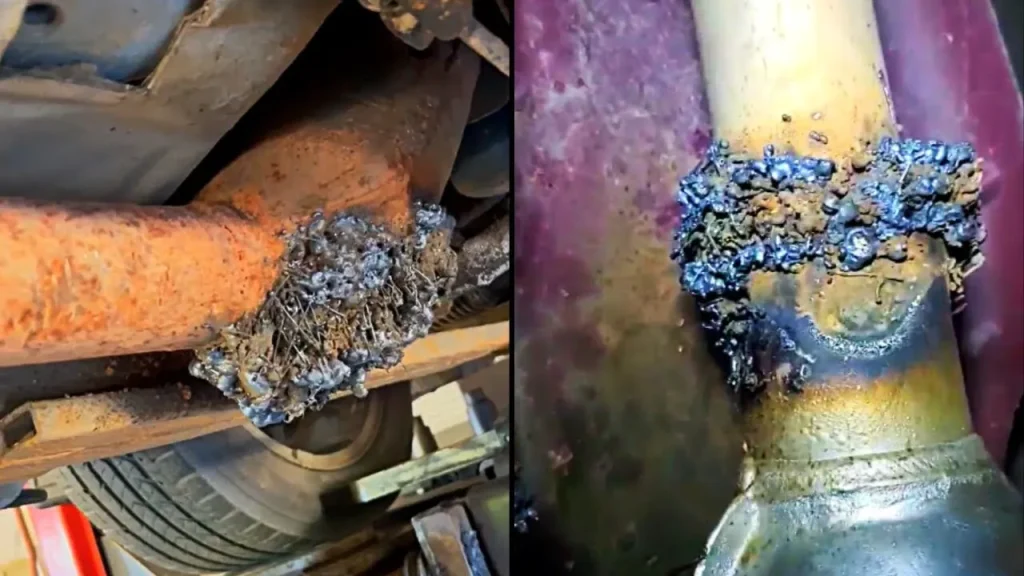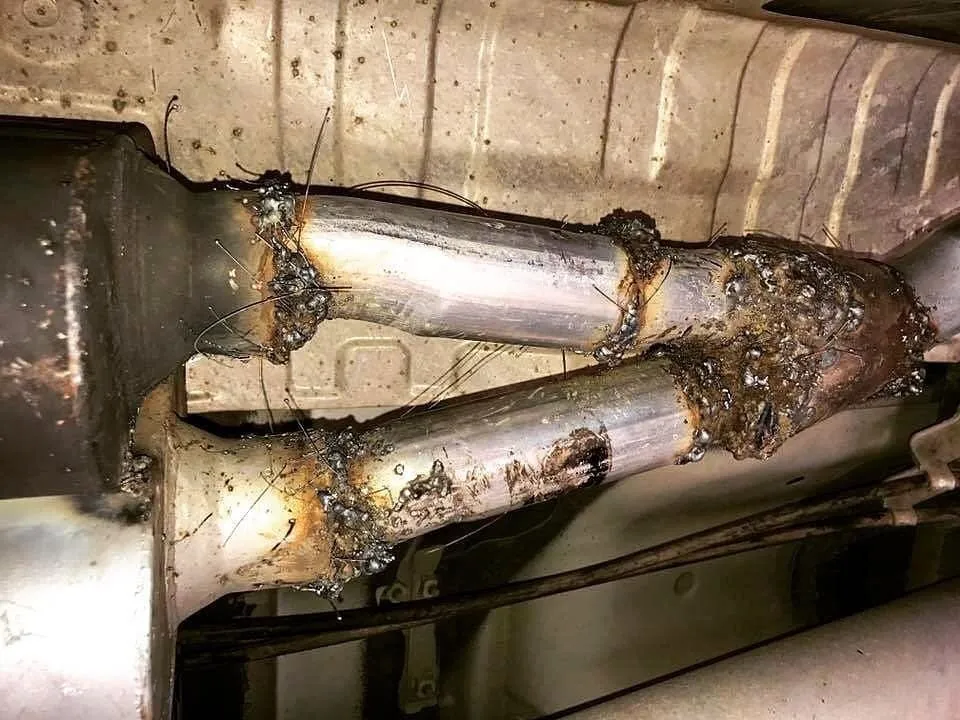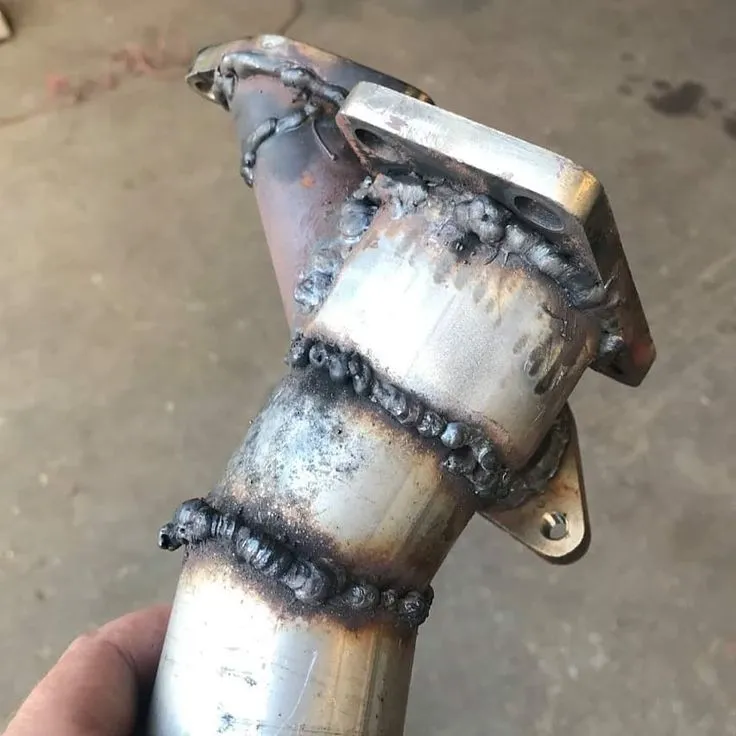Opening the Issue
The exhaust system in a vehicle is more than just a pipe that expels fumes. It plays an essential role in controlling emissions, enhancing engine performance, and ensuring the overall safety of the vehicle. A crucial part of this system is the welds that join various components, such as the muffler, catalytic converter, and exhaust pipes. These welds must be precise and durable to maintain the system’s integrity and functionality.
When exhaust welds are of poor quality, they can cause numerous problems. For instance, bad welds can lead to exhaust leaks, which can decrease engine efficiency and increase emissions. Moreover, these leaks can let toxic gases, such as carbon monoxide, into the vehicle’s cabin, posing significant health risks to the occupants. Additionally, poor welds can cause parts of the exhaust system to become loose or misaligned, leading to increased noise and potential damage to other vehicle components.

Why Exhaust Welds are Important?
Role of Welds in the Exhaust System
Exhaust welds are essential for holding together the various parts of the exhaust system. These welds connect components such as the muffler, catalytic converter, and exhaust pipes, forming a continuous path for exhaust gases to be expelled from the engine. Here’s why they are so crucial:
- Maintain Performance: Properly welded exhaust systems ensure that exhaust gases are expelled efficiently. This helps maintain optimal engine performance by reducing backpressure, which can otherwise hinder engine efficiency.
- Reduce Emissions: Good welds prevent leaks that can allow harmful gases to escape before they are properly treated by the catalytic converter. This ensures that the vehicle meets emission standards and reduces its environmental impact.
- Ensure Safety: Strong welds prevent exhaust gases from leaking into the vehicle’s cabin. Toxic gases like carbon monoxide can be extremely dangerous and even lethal if inhaled over time.
Consequences of Poor Quality Welds
When exhaust welds are not done correctly, several issues can arise that affect both the vehicle’s performance and the safety of its occupants. Here are some of the primary consequences:
- Exhaust Leaks: Poor welds can create gaps where exhaust gases can escape. This not only leads to a decrease in engine efficiency but also increases emissions, making the vehicle less environmentally friendly.
- Noise Increase: Faulty welds can cause parts of the exhaust system to become loose or misaligned. This can result in rattling or loud roaring noises, which are not only annoying but can also be a sign of more serious issues.
- Safety Risks: Leaking exhaust gases, such as carbon monoxide, can enter the vehicle’s cabin. This poses a significant health risk to the driver and passengers, potentially leading to symptoms like headaches, dizziness, and even death in severe cases.
- Costly Repairs: Ignoring bad welds can lead to more significant damage over time. Components of the exhaust system can break or fail, resulting in expensive repairs that could have been avoided with proper maintenance.
Recognizing Bad Exhaust Welds

Signs Your Exhaust Welds Need Attention
Identifying issues with your exhaust welds early can save you from more severe problems down the line. Here are some common signs that indicate your exhaust welds may need attention:
- Unusual Noises:
- Listen for hissing, rattling, or loud roaring sounds coming from the exhaust system. These noises often indicate leaks or loose parts due to poor welds.
- Visible Cracks or Rust:
- Regularly inspect your exhaust system for any visible cracks, rust spots, or discoloration around the welds. These are clear signs of deteriorating welds that need immediate attention.
- Decreased Fuel Efficiency:
- Noticeable drops in fuel efficiency can be a sign of exhaust leaks affecting the engine’s performance. Bad welds can cause the engine to work harder, thus consuming more fuel.
- Check Engine Light:
- A persistent check engine light may be triggered by issues related to exhaust leaks or emissions problems. This can be a result of poor-quality welds causing the system to malfunction.
- Exhaust Smell Inside the Vehicle:
- If you notice a strong exhaust smell inside the vehicle, it could indicate that exhaust gases are leaking from bad welds and entering the cabin, which is a serious health hazard.
How to Inspect for Bad Exhaust Welds
Conducting a thorough inspection of your exhaust system can help identify bad welds. Here’s a step-by-step guide:
- Safety First:
- Ensure the vehicle is on a flat surface and securely use jack stands if lifting the vehicle. Always take necessary safety precautions to prevent accidents.
- Visual Inspection:
- Look for visible cracks, holes, or rust around the welds and joints. Use a flashlight to get a clear view of hard-to-see areas.
- Sound Check:
- With the engine running, listen for any unusual noises coming from the exhaust system. Pay attention to hissing sounds, which can indicate leaks.
- Smoke Test:
- Use a smoke machine to identify leaks. Introduce smoke into the exhaust system and observe any smoke escaping from the welds, indicating a problem area.
- Professional Diagnosis:
- If you are unsure about the condition of your exhaust welds or if you notice any signs of damage, consult a professional mechanic for a comprehensive inspection. They can use specialized tools and techniques to accurately diagnose the issue.
How to Fix and Repair Bad Exhaust Welds

Sourcing Professional Help
When it comes to fixing bad exhaust welds, seeking professional help is often the best course of action. Here’s why:
- Expertise:
- Professional mechanics have the expertise to diagnose and repair exhaust welds accurately. They are trained to handle different types of welds and materials used in exhaust systems.
- Specialized Tools:
- Repairing exhaust welds often requires specialized tools and equipment that are typically not available to the average car owner. Professionals have access to these tools, ensuring a proper and safe repair.
- Quality Assurance:
- Mechanics provide a level of quality assurance that DIY repairs might lack. Professional repairs are usually backed by warranties, giving you peace of mind that the job has been done correctly.
DIY Repairs: Basic Guidelines
For those who are confident in their mechanical skills, performing DIY repairs on bad exhaust welds can be an option. Here are some basic guidelines to follow:
- Gather Necessary Tools:
- Essential tools include a jack and jack stands, a welding machine, protective gear (welding helmet, gloves), and cleaning tools (wire brush, sandpaper).
- Safety Precautions:
- Always work in a well-ventilated area and wear appropriate protective gear. Ensure the vehicle is securely lifted and stable before starting any work.
- Cleaning the Area:
- Clean the area around the weld thoroughly. Remove any rust, dirt, or old welding material using a wire brush or sandpaper. This ensures a clean surface for the new weld.
- Preparing the Welding Machine:
- Set up your welding machine according to the manufacturer’s instructions. Ensure the settings are appropriate for the material you are welding.
- Performing the Weld:
- Carefully weld the cracked or damaged area, ensuring the weld is even and covers all gaps. Take your time to avoid creating weak spots.
- Inspection and Testing:
- After welding, inspect the area to ensure there are no gaps or weak spots. Start the vehicle and listen for any unusual noises. A smoke test can also help identify any remaining leaks.
Preventing Future Problems
To avoid future issues with exhaust welds, consider the following tips:
- Regular Inspections:
- Perform regular inspections of your exhaust system to catch any potential issues early. This can prevent small problems from becoming major repairs.
- Quality Materials:
- Use high-quality materials for any repairs or replacements. Cheap materials can lead to quicker deterioration and more frequent issues.
- Professional Maintenance:
- Schedule regular maintenance with a professional mechanic. They can provide comprehensive inspections and repairs that go beyond DIY capabilities.
Costs and Budgeting
Understanding the costs associated with repairing bad exhaust welds can help you budget accordingly:
- Professional Repairs:
- Costs can vary widely based on the extent of the damage and the mechanic’s rates. Typically, you can expect to pay between $100 to $400 for professional exhaust weld repairs.
- DIY Repairs:
- While DIY repairs can save on labor costs, you will need to invest in the necessary tools and materials. Initial costs for a basic welding setup can range from $200 to $500, but these tools can be reused for future repairs.
Case Studies: Real-life Examples of Bad Exhaust Welds

Case Study 1: The Daily Commuter
John, a daily commuter, started noticing a loud rattling noise from his car’s exhaust system. Upon inspection, he found that the welds connecting the muffler to the exhaust pipe were cracked and rusted. This caused the muffler to hang loosely, leading to increased noise and a decrease in fuel efficiency. John took his car to a professional mechanic who re-welded the joints using high-quality stainless steel, restoring the exhaust system’s integrity and performance.
Case Study 2: The Family Road Trip
During a long road trip, the Smith family noticed a strong smell of exhaust fumes inside their vehicle. Concerned for their safety, they stopped at the nearest repair shop. The mechanic discovered that the welds on the catalytic converter had failed, causing toxic gases to leak into the cabin. The mechanic replaced the damaged sections and welded them securely, ensuring no further leaks and making the vehicle safe for the rest of their journey.
Case Study 3: The Budget DIY Repair
Tom, an avid DIY enthusiast, decided to fix the exhaust welds on his car himself to save money. He used a low-quality welding machine and cheap materials. Initially, the repairs seemed successful, but within a few months, the welds started to fail again. Tom realized that saving money on materials and tools resulted in more frequent repairs and higher long-term costs. Eventually, he decided to invest in professional repairs to avoid recurring issues.
Case Study 4: The Performance Upgrade
Emma wanted to upgrade her car’s exhaust system to enhance its performance. She opted for a high-performance exhaust kit and had it installed by a professional. The mechanic ensured that all welds were done using high-quality materials and precise techniques. The result was a noticeable improvement in engine performance and a reduction in exhaust emissions, demonstrating the importance of quality welds in performance upgrades.
Lessons Learned
These case studies highlight the importance of addressing bad exhaust welds promptly and using high-quality materials and professional services. Poor welds can lead to safety hazards, decreased performance, and increased costs. Investing in proper repairs and regular maintenance can prevent these issues and ensure the longevity and reliability of the vehicle’s exhaust system.
Conclusion
Summary of Key Points
Bad exhaust welds pose significant risks to vehicle performance, safety, and environmental impact. Recognizing the signs of poor-quality welds, such as unusual noises, visible cracks, and decreased fuel efficiency, is crucial for timely intervention. Regular inspections and maintenance, the use of high-quality materials, and choosing reputable mechanics can prevent these issues. Real-life case studies underscore the importance of addressing bad welds promptly to avoid costly and dangerous consequences.
Ensuring the integrity of your vehicle’s exhaust system should be a priority. Regularly check for signs of wear and tear and do not hesitate to seek professional help when necessary. By taking proactive steps to maintain your exhaust system, you can ensure better performance, lower emissions, and a safer driving experience. Invest in quality repairs and materials, and always choose certified and experienced mechanics to handle exhaust system issues.
Leave a Reply